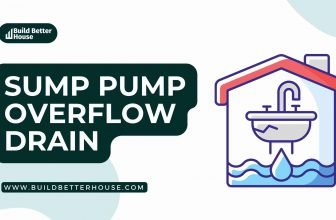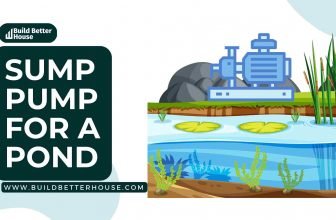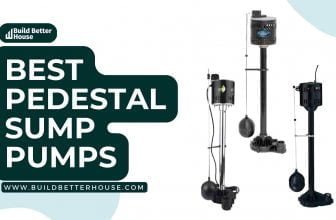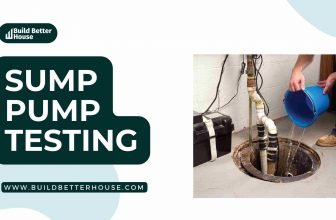Sump Pump vs French Drain: Which Is Better?
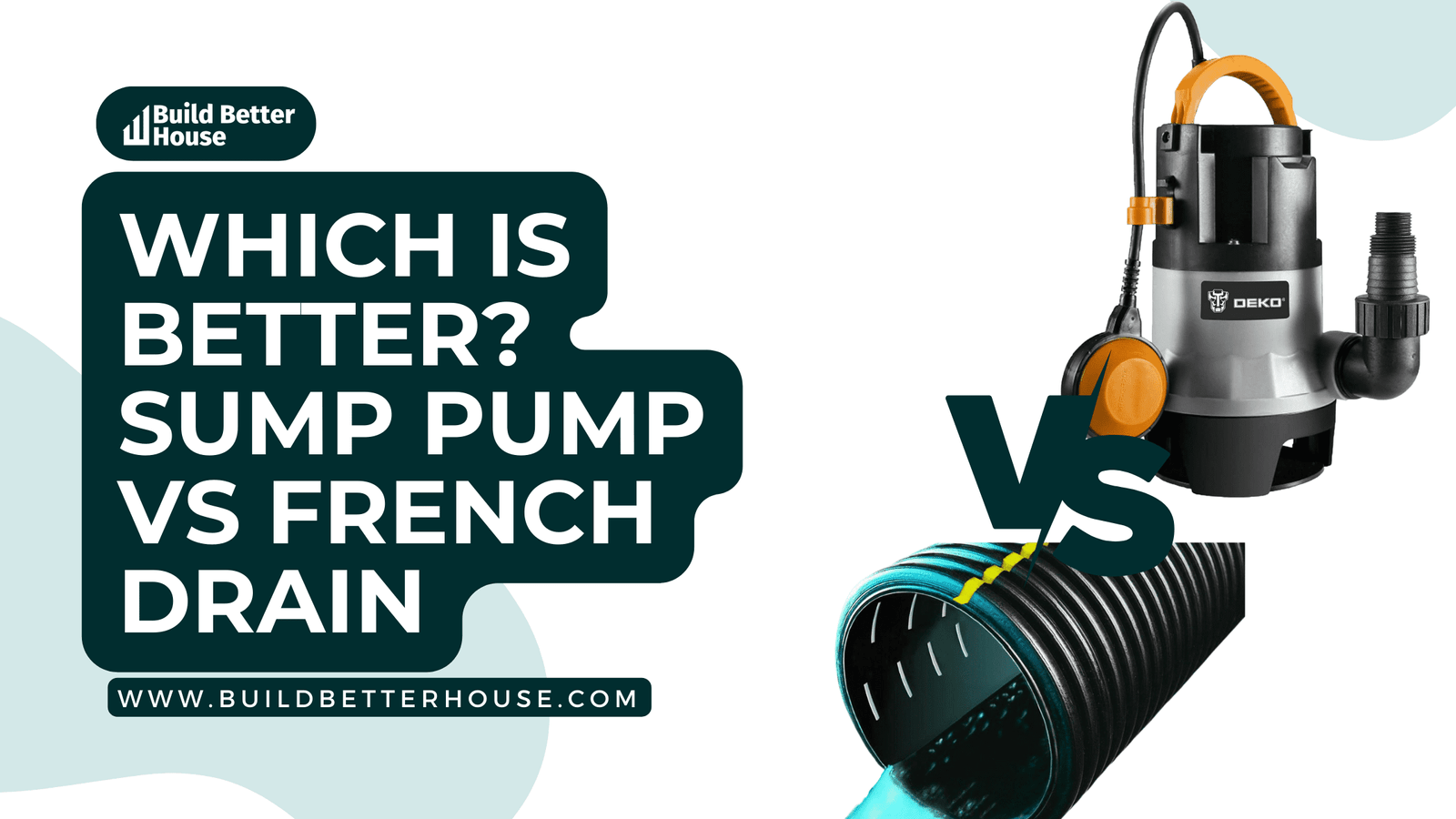
Do you need help installing a sump pump vs French drain for your home? Don’t worry; we’re here to assist you
Standing water in a basement can cause significant issues. Termites drawn to excessive moisture in the basement can devour the wood framework of a home.
A wet basement can also cause toxic mold and mildew, resulting in thousands of dollars worth of damage. You can eliminate basement water by installing a sump pump vs French drain.
Sump pumps and French drains are the most common and efficient domestic drainage techniques. Both sump pumps and French drains have different strengths and drawbacks. You can prevent a basement flood by choosing the best drainage approach.
This article will compare the sump pump vs French drain and discuss whether your home needs them.
What Is A Sump Pump?
Before learning about sump pump vs French drain, let’s understand what a sump pump is.
Sump pumps are an excellent method of managing excess water in the basement of a house. You must dig a pit at the lowest point of the cellar, and a sump pump is placed into it. Water will naturally flow to this location as it builds up in the basement.
It contains a float switch activated when the water reaches a certain level. The pump is activated and pumps the water out of the house through a pipe when the water runs to a certain level.
What Is A French Drain?
Before learning about sump pump vs French drain, let’s understand what a French drain is and how it works.
French drains are underground water management and drainage systems. It is usually 2 to 4 inches deep, lined with a perforated drain pipe, then surrounded with gravel and backfilled. You have to create a trench along the foundation of the building to install a French drain.
Water collected in the basement is guided through the French drain and down the lines. The pipes are sloped so that they drain water from the house.
Sump Pump Advantages Over French Drain
Sump pumps offer a few essential advantages over French drains. The most significant and obvious benefit of sump pump vs French drain is the water they can pump and drain. Some other advantages are:
Activates When Needed
There are two main advantages to using a sump pump instead of a French drain. The first is that sump pumps are always active, whereas French drains are passive and do not activate during heavy rain or flood.
On the other hand, Sump pumps start as soon as the float begins to rise as quickly as the pump can drain more water than the basement can accept.
In addition, French drains can only handle small to medium amounts of water over time, but they do not take large amounts of water during flash events.
On the other hand, a sump pump can easily handle a large amount of water entering the basement. If the water level rises, you can activate the pump ‘as needed’ and increase the pumping power in a flash.
Therefore in the case of always remaining active and having a larger capacity, sump pump precedes the sump pump vs french drain comparison.
Pumping Uphill
A gravity-based drainage system like a French drain cannot remove water from a flooded basement, but a sump pump can help by pumping water uphill. Sump pumps can be beneficial when you must remove water from a flooded basement.
Installation
Typically, installing a sump pump is a fast and economical procedure. If you live in a major city, you may hire a local plumber to finish the job. A professional or a handy person with tools and a shovel may finish the job in a few hours. Therefore in the case of installation, sump pump precedes the sump pump vs french drain comparison.
French Drain Advantages Over Sump Pump
In some cases, sump pumps are not as helpful as French drains. Here are some advantages of a French drain over a sump pump.
Passive Draining
A basement sump pump is an active pumping system that operates on an on-and-off basis. A passive drainage system naturally drains water from the basement using a French drain consisting of underground drain lines with a slight downward slope. Water collects and drains naturally over time due to the lack of a motor or float switch.
Therefore in the case of naturally draining water, French drains precede the sump pump vs french drain comparison.
Route Water Away From Home
Keeping water from pouring into your basement is as simple as installing a well-designed French drain system. By positioning a series of drains to collect water as it drops and drains it away from your home, you can route water away from your basement.
In addition, you can route water away from your basement by routing it away from your home through city drainage or an alternative drain location.
No Electrical Connection
Sump pumps (except water-powered sump pumps such as the Zoeller 503) require electricity. If the electricity goes out in a big storm, sump pumps will not operate.
French drains, on the other hand, rely on gravity, so water can continue flowing as long as the gutters are not clogged. Therefore, in the absence of electricity, French drains precede the sump pump vs french drain comparison.
No Mechanical Parts
Mechanical or moving parts are absent in French drains, making them less susceptible to failure or damage than sump pumps.
Because pump pumps rely on many moving parts and a powerful pump that is susceptible to failure if a stone breaches the filter or wears out over time, pump pumps are less reliable than French drains.
No Noise
One of the primary reasons why people prefer French drains over others is that they are quiet. Sump pumps may be particularly noisy if they are located directly under a bedroom and have a thin floor.
French drains, on the other hand, are silent and make no noise, making them suitable for light sleepers. A well-designed sump pump basin cover can help reduce the noise by reducing the amount of water joining your basin.
Using a less powerful pump with well-designed French drains can also help reduce noise. But in the case of making no noise, French drains precede the sump pump vs french drain comparison.
To install a sump pump, you will need to take the following steps:
Your sump pump will keep your basement dry in winter and spring if you install it correctly. Sink the pump in, and you’ll be able to protect your basement from the worst weather. Discharge pipes outside your house and remove the water from your basement, so it does not immediately refill.
However, these drains could be better. If you wish to cover more area, consider looking into alternative waterproofing solutions, as a sump pump cannot draw water from the entirety of your basement.
In sump pump vs French drain, you must know that sump pumps need electricity to function. If your electricity goes out and you don’t have any alternative solutions to back your pump up, you may find yourself dealing with a lot of water in a short time if you need a reliable battery backup.
To install a French drain, you need to take the following steps:
A French drain will shield the whole of your basement, removing water from every corner to maintain your belongings and the structural integrity of your house.
In sump pump vs French drains, French drains aren’t constantly as powerful as sump pumps. You’ll require to be prepared to maintain these systems to keep your house from flooding.
How To Choose Between A Sump Pump And French Drain?
It will help if you weigh both the sump pump vs French drain alternatives before starting to dig. Neither one is better or worse, but each has its advantages.
Sump pumps are preferable when you need high water removal capacity on the spot. They may have a higher initial and continuing cost, but they may be the most efficient procedure for protecting your basement from flooding.
If you have a significant amount of land, little accessibility to electricity, or desire to reduce the amount of water removed per hour, you should consider French drains.
You should employ both systems if you have water intrusion issues. It’s often a good idea to combine sump pump vs French drain. When you have a French drain in your basement, it collects water and channels it to a sump pump so you can get rid of it, and your basement stays dry.
Conclusion
Most homeowners ask which is better: a sump pump vs French drain. Both have perks and drawbacks, and if you still can’t decide, we suggest installing a sump pump. A sump pump’s pumping power is higher, and its capacity is more significant.
If you have abundant water in your basement, consider installing a French drain and sump pump to safeguard your house. Because the water is pumped from the sump pit through the French drain, it flows through the home much quicker than it would through a pipe alone.
Hopefully, now you know the difference and superiority between the sump pump vs French drain.



